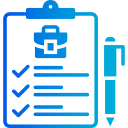Practice the Right Technical Skills
Focus on patterns like two pointers, sliding window, BFS and DFS, hash maps, and simple recursion. Time-box practice sessions, say your plan aloud, and sanity-check complexity. Share your toughest problem this week, and we’ll propose a pattern-driven way to approach it calmly.
Practice the Right Technical Skills
Great juniors debug methodically: reproduce the bug, isolate variables, log insights, form hypotheses, and test small changes. During one mock, Avi explained each step and impressed the panel. Practice narrating your process and invite a friend to challenge assumptions in a safe setting.
Practice the Right Technical Skills
Know big-O basics, memory trade-offs, HTTP requests, status codes, and why indexes help. Understand JSON vs. XML, REST conventions, and simple caching ideas. If any topic feels fuzzy, comment the keyword, and we’ll drop a micro-guide tailored to first-time interviewees.
Practice the Right Technical Skills
Lorem ipsum dolor sit amet, consectetur adipiscing elit. Ut elit tellus, luctus nec ullamcorper mattis, pulvinar dapibus leo.







